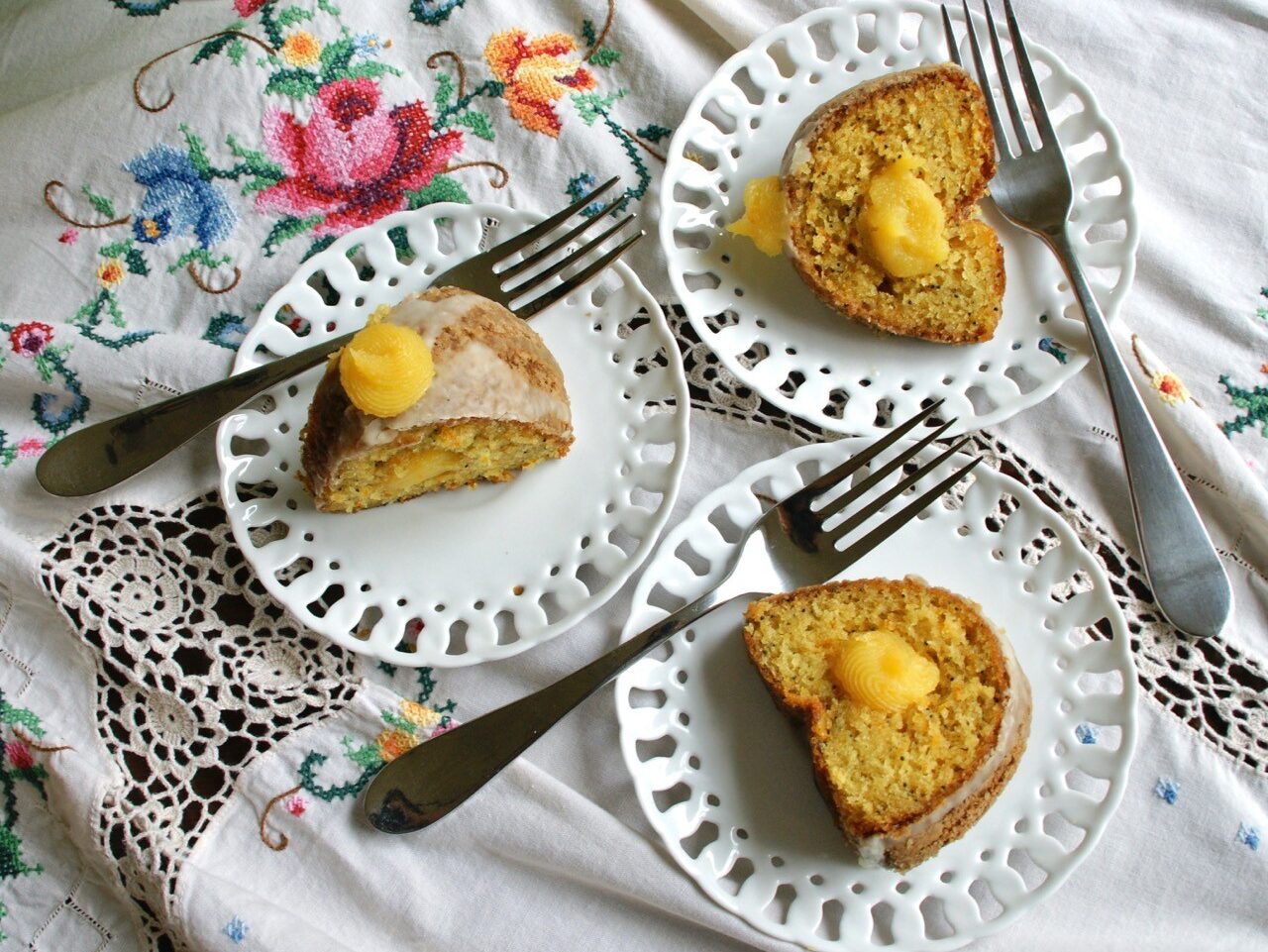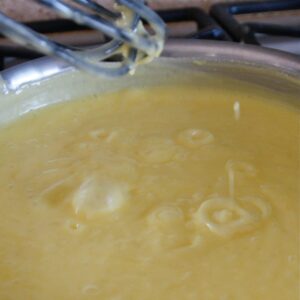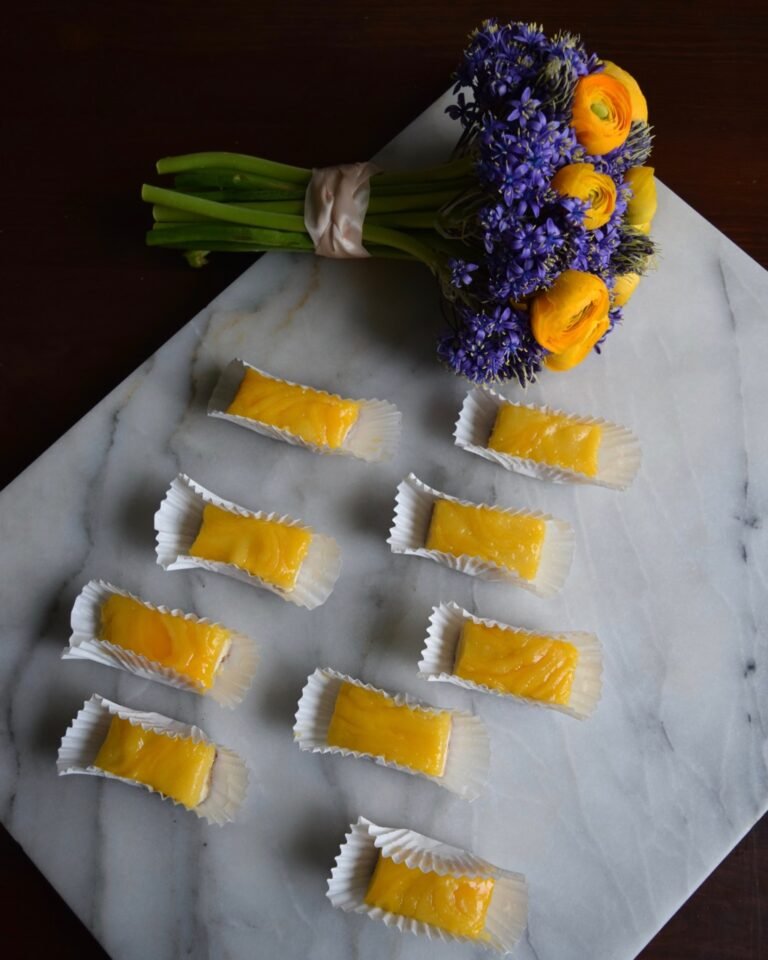Fresh made citrus curd, especially with lemon, is a staple on my dessert menu and is constantly being prepped for my catering and custom desserts. Most everyone loves a good lemon bar! Once you know how good this tastes, and how easy it is to make, there’s no going back to the stuff in a can. You can do this! Lemon is the original basic, but you can use this recipe using most any citrus fruit you love: orange, lime, grapefruit, etc.
Jump to RecipeA good curd is a star of any tea-time, and I use it for tarts, pies, bars, fillings, toppings and more.

This recipe is classically made on the stove top, and is a lot like a custard, which is why the name “curd” sounds so much like it’s egg-yolked cousin recipe. With curd, the ingredients are switched up and the star is the fruit itself. There are absolutely no need for artificial colors or flavorings.

Here I share with you how to make both lemon curd and orange curd, with the same exact recipe for any citrus curd – using the freshly squeezed juice from the fruit, and optional zest of the fruit’s skin, to take the flavor to another level.
Search my blog, Google or Pinterest, or link up with my other recipes that are awesome with curd. Here are a couple links to other recipes I’ve shared:

Mili’s Citrus-Lemon Curd
Equipment
- Tools I use: saucepan, handheld whisk, grater, standing mixer with paddle attachment, handheld digital food thermometer.
Ingredients
- 1 cup salted butter, softened 2 sticks. Use vegan butter in a 1:1 ratio for a dairy-free recipe.
- 1 cup granulated sugar
- 2 whole eggs
- 2 egg yolks
- 1/4 teaspoon salt
- 1/3 cup fresh-squeezed lemon juice (or orange juice or lime, etc.)
- 1 tablespoon zest of two large, fresh lemons optional
- 1/3 cup corn starch optional
Instructions
- Prepare your lemon flavor by zesting the lemons you are using, and straining fresh-squeezed juice to make 1/3 cup per batch. Juice will always be placed as the last ingredient when mixing curd.
- To soften my butter, I put one cup in the microwave all together, for a total of 15 seconds. Microwaves are different so it's up to you. You can also do the old-school method of leaving it out at room temperature until it has softened. In a standing mixer, with a paddle attachment or scraping paddle attachment, on medium-speed, cream the softened butter until it completely covers the bottom of the mixing bowl.

- Next, mix in all of the lemon zest (if using). Add the sugar and salt. Mix until fluffy. If you'd like a thicker or more set lemon curd, this would be the time to add the optional corn starch. I recommend it if you want a stiffer-set and a good cut for lemon bars.

- Add the eggs, one at a time, until all are incorporated. Mix in the juice last.

- Pour the mixture into a saucepan at medium-high heat. Keep the heat there. Use a whisk to constantly stir the ingredients. This process will take about 10 minutes.

- You're whisk and continue to whisk. In about 5 minutes you'll notice that it will start to bubble and the color will deepen.

- It will also be turning a more golden-yellow color. Keep whisking, until your thermometer reaches 173-175 degrees. I'm using All Clad pans that are designed to heat quickly and distribute the heat evenly. I like to see my curd begin to bubble as my second sign of being cooked properly. Take it off the heat once it is done. If you overcook this, or don't allow the heat to be evenly distributed while whisking/cooking, the entire batch will be ruined.

- If pouring into a cooled pie, tart, or bar crust, the curd needs to be poured in hot, to set nicely.
- If you're reserving it for canning, or topping desserts later, you'll cover it with wrap, allow it to cool, and then refrigerate for at least three hours or overnight. After it has set and chilled, it can be piped or spread.

Thanks for being here. Hope you enjoy this!













